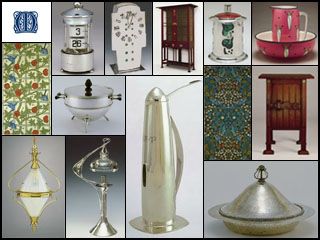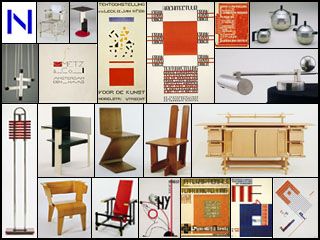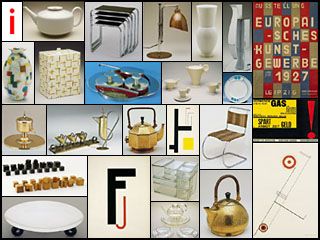“The Modern Movement ……”
So far I have written about several art movements,
different design styles and designers - starting from the Arts and Crafts
Movement up to the Organic Design - and in my writings I have often referred to
the Modern Movement or mentioned Modernism.
But what exactly was the Modern Movement?
Today I am going to touch on those movements and
styles (that I have already included in my Blog) that are associated with the
Modern Movement.
The Modern Movement in Design was actually initiated
in the mid-19th century by certain designers who wanted to reform
their society by introducing a new approach to design. Such designers include John Ruskin and
William Morris. As I explained earlier
on, Morris was against the industrial production during the Victorian era. He favoured handcraftsmanship and he
practiced what he advocated. The
reforming ideas of Morris – mainly the simplicity, suitability, practicality
and the good quality of the products, as well as his suggestion that design
could be used as a tool to bring about good social changes – had a very
important impact on the early origins of the Modern Movement. Then, as I have mentioned before, several
craft-based guilds and workshops, especially in Britain, Germany and America,
were founded because they were encouraged by the ideas of Morris.

Mia Minneapolis Institute of Arts, (2013), British Arts and Crafts [ONLINE].
Available at: http://www.artsmia.org/modernism/BAC.jpg
[Accessed 03 December 13]
Gradually it was understood that industrial production
was important too in order for the reforming ideas to be realized. This was the time when the Deutscher Werkbund
was founded in 1907 – a foundation that stressed on functionality. By getting rid of the unnecessary decorations
the Deutscher Werkbund developed greater efficiency when it came to the
production and to the material used, and this brought about benefits both to
the user and the producer. This was the
modern approach to design. The
elimination of decoration was also recommended by De Stijl (in fact, when I
wrote about De Stijl, I mentioned that the works were extremely simple) while the Constructivists and Futurists praised
machine work and industrial production.
Even Walter Gropius, who founded the Bauhaus in 1919, realized that
Modernism was essential, after the wreck left behind by the First World War. Gropius put into practice the reforming
ideals of those who initiated Modernism.
And so, in the 20th century, Bauhaus which promoted
functionalism, industrial production techniques and state-of-the-art materials
became associated with Modernism.

The Art History Archive, (2013), Peter Behrens, 1908 [ONLINE].
[Accessed 03 December 13]

Mia Minneapolis Institute of Arts, (2013), De Stijl [ONLINE].
Available at: http://www.artsmia.org/modernism/Destijl.jpg
[Accessed 03 December 13]

Mia Minneapolis Institute of Arts, (2013), Bauhaus [ONLINE].
Available at: http://www.artsmia.org/modernism/Bauhaus.jpg
[Accessed 03 December 13]
By 1927 the International Style of Modernism had
already developed and Le Corbusier played an important role in promoting this
new approach to design, even though his designs were much less practical than
those produced at the Bauhaus. However,
modernism almost came to an end when the Industrial Style promoters started
going to extremes and distorting the social aims of Modernism.

architectures, (2013), A Crisis, For Real [ONLINE].
[Accessed 03 December 13]
Thanks to Alvar Aalto and other Scandinavian
designers, a humanizing form of Modernism was initiated – the Organic Design –
which inspired a new generation of Modern Movement designers, including Charles
Eames that I mentioned recently.
BLOUIN ARTINFO, (2010), Alvar Aalto's Modernist Throne, Reimagined [ONLINE].
Available at: http://fr.blouinartinfo.com/sites/default/files/migrated/6//182661%3APromo_Top_HR_Artek_Armchair.jpg
[Accessed 03 December 13]
Other References:
Mia Minneapolis Institute of Art. 2013. British Arts and Crafts. [ONLINE]
Available at: http://www.artsmia.org/modernism/m1intro.html.
[Accessed 03 December 13]
Book: Fiell, C.F and P.F, 1999. Design of the 20th Century. 2nd ed. Germany: Taschen

No comments:
Post a Comment